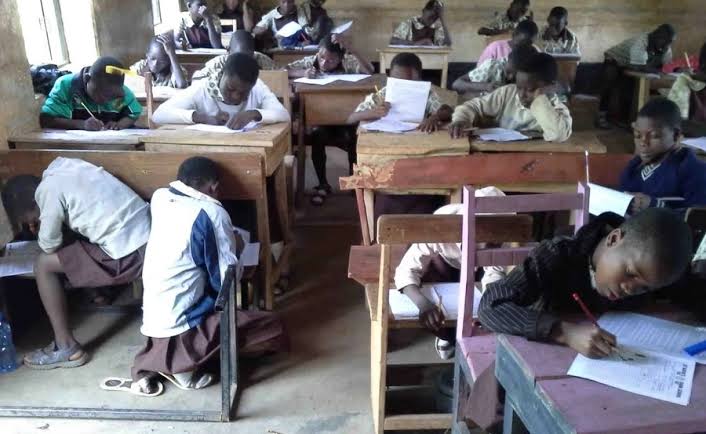Education is recognized as a key human right and a requisite to personal and communal development. But in Nigeria, a nation that is among the most populated in Africa, the major obstacle to obtaining education is the pressing issue of poverty. Developing policy recommendations and interventions for breaking the cycle and supporting education for every Nigerian child is deeply essential to understanding the interconnections of poverty and education challenge.
The Socio Economic Landscape Of Nigeria
A nation (Nigeria) blessed with consumable natural resources, yet encumbered with immense economic hardship. Poverty is high in African countries as the population exceeds 200 million. The National Bureau of Statistics has it that more than 40% of Nigerians live below the poverty line. The issue of poverty is endemic, with nothing out of the reach of its effects, from food to medicine and education to good drinking water.
This largely underserved sector has suffered much under the brutal new laws — for instance the ban on use of gari in the village was tragic for many, the livelihood of the farmers of this region being generally dependent on gari. Due to the evident high levels of poverty, the burden is greater in rural areas where residents have to settle for less.
Barriers to Education Caused by Poverty
1. Financial Constraints
The most direct impact of poverty on education is the inability of families to afford school-related expenses. Although primary education is officially free, many hidden costs are associated with schooling, such as uniforms, books, transportation, and examination fees. For families living in poverty, these costs are often prohibitive, leading to high dropout rates and low enrollment levels. In many cases, children are required to work to supplement the family income, further reducing their time and energy for education.
2. Nutritional Deficiencies and Health Issues
Children from impoverished families are more likely to suffer from malnutrition and health problems, which adversely affect their cognitive development and academic performance. Poor nutrition can lead to stunted growth and weakened immune systems, making children more susceptible to illnesses. Frequent sickness and malnourishment contribute to higher absenteeism and lower concentration levels in school, hampering educational attainment.
3. Lack of Educational Infrastructure
Poverty-stricken areas, especially rural communities, often lack adequate educational infrastructure. Schools in these regions may be poorly constructed, lacking essential facilities such as electricity, running water, and sanitation. Additionally, there is often a shortage of qualified teachers, leading to overcrowded classrooms and insufficient attention to individual students. These deficiencies create an unconducive learning environment, further discouraging attendance and engagement.
4. Cultural and Gender Barriers
In many impoverished regions of Nigeria, cultural attitudes and gender biases exacerbate the impact of poverty on education. Girls, in particular, are disproportionately affected, with many families prioritizing boys’ education due to traditional gender roles. Early marriages and teenage pregnancies are prevalent among girls from poor families, cutting short their educational pursuits. Cultural practices that undervalue education for girls perpetuate the cycle of poverty and hinder societal progress.
Psychological Impact
The psychological toll of poverty cannot be overlooked when examining its impact on education. Children from impoverished backgrounds often face stress and anxiety related to their family’s financial instability. This mental strain can lead to behavioral problems, decreased motivation, and lower academic achievement. The constant worry about their family’s economic situation can distract children from their studies, leading to poor performance and a higher likelihood of dropping out.
Government and Policy Responses
Addressing the impact of poverty on education requires comprehensive and multi-faceted approaches. The Nigerian government, along with international organizations and NGOs, has implemented various initiatives to mitigate these challenges:
1. Universal Basic Education (UBE)
The UBE program aims to provide free and compulsory education for children up to junior secondary school. While the policy is a step in the right direction, effective implementation remains a challenge. Ensuring that education is genuinely free by eliminating hidden costs and improving infrastructure is crucial for the program’s success.
2. School Feeding Programs
Initiatives like the National Home-Grown School Feeding Program aim to improve nutrition and encourage school attendance by providing free meals to students. By addressing malnutrition and incentivizing attendance, these programs help to enhance academic performance and retention rates.
3. Conditional Cash Transfers (CCTs)
CCTs provide financial incentives to impoverished families to keep their children in school. These programs, often funded by international donors, have shown positive results in increasing enrollment and reducing dropout rates. However, scaling these programs to reach all vulnerable families remains a significant challenge.
4. Infrastructure Development
Investing in educational infrastructure, particularly in rural areas, is essential for creating a conducive learning environment. Building more schools, training and recruiting qualified teachers, and ensuring that schools have basic amenities can significantly improve access to quality education.
5. Gender-Specific Interventions
Addressing gender disparities in education requires targeted interventions. Programs that provide scholarships, mentorship, and support for girls can help overcome cultural barriers and encourage female education. Community awareness campaigns can also play a crucial role in changing attitudes towards girls’ education.
Community and Civil Society Involvement
Beyond government efforts, the involvement of communities and civil society organizations is vital in addressing the impact of poverty on education. Grassroots initiatives, such as community schools and volunteer teaching programs, can provide immediate relief to underserved areas. Local NGOs often have a better understanding of the specific needs and challenges of their communities, allowing them to implement more tailored and effective solutions.
Community participation in school management committees can also enhance accountability and ensure that resources are used effectively. When parents and community members are involved in decision-making processes, they are more likely to support and prioritize education, creating a more sustainable and inclusive approach to educational development.
